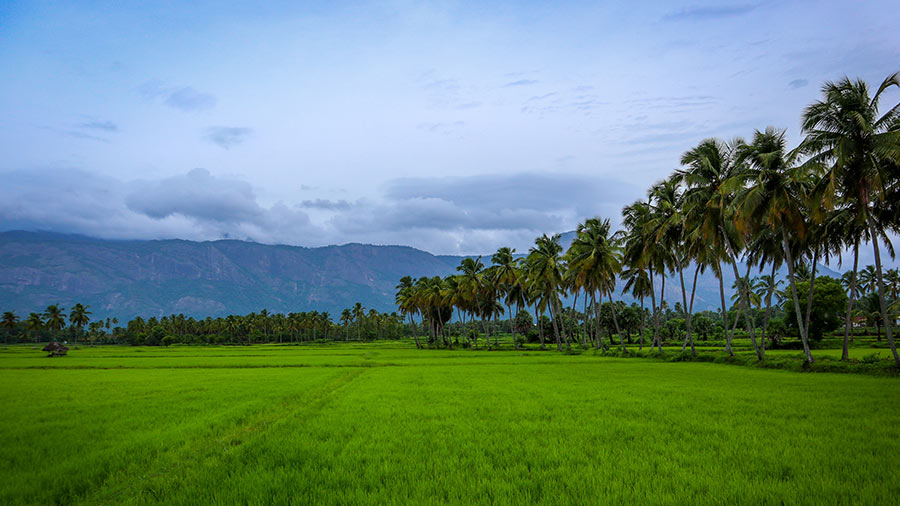Global investors often find themselves in an unfavorable position of having to face being double taxed – taxed by two different countries on the same income – unless there is a Double Tax Avoidance Agreement in place between the two countries. For example, a company might be subject to taxes in its native or tax resident country and also in another foreign country where it has raised income by providing labor or via a foreign-invested company that provides goods or services.
Double Tax Avoidance Agreements (DTAA) treaties effectively eliminate double taxation in specific cases by identifying exemptions or reducing the amount of taxes payable. It is, therefore important for foreign investors or expatriates working in India to be aware of any DTAAs that may exist between India and the their tax resident countries that apply to them and to understand how these agreements are applied in practice between their tax resident countries and India.
India's Double Taxation Avoidance Agreements (DTAA)
India has one of the largest networks of tax treaties for the avoidance of double taxation and prevention of tax evasion. India has established over 94 comprehensive DTAAs and eight limited DTAAs, compared with China’s 110 and Vietnam’s 80. The purpose of such tax treaties is to develop a fair and equitable system for the allocation of the right to tax several types of income between the ‘source’ and ‘residence’ countries.
Applicability of DTAAs
A DTAA between India and other countries covers only tax residents of India and tax residents of the negotiating country. Foreign or non-resident companies operating in India are subject to withholding tax on their income – dividend, interest, royalty, or fees for technical services, as prescribed under the IT Act. However, foreign companies that are tax resident in the countries that India has a DTAA with, can claim more beneficial provisions and rates between the IT Act and the DTAA.
How foreign investors and expats can benefit from India’s DTAAs?
Double Taxation Avoidance Agreements (DTAA) provide significant benefits for individuals and businesses engaged in cross-border activities, helping to mitigate the burden of paying taxes in multiple jurisdictions. Here are some strategies and examples to optimize tax liabilities through India’s DTAA, and why consulting with tax experts or legal advisors is crucial.
- Review the specific provisions related to your income type, whether it's salary, dividends, interest, royalties or Fees for Technical Services, Capital gains, Income related to artists or sportsmen.
- Claiming tax credits allows taxpayers to reduce their tax liability in India by the amount of tax already paid in the foreign country and vice-versa.
- Income earned from shipping, air transport, might be exempt from tax in one of the countries based upon the transaction happened within the provisions of DTAA.
- DTAAs ensure that the same income is not taxed twice.
- To avail DTAA benefits, you need to file specific forms, such as Form 10F, with the Indian tax authorities.
Examples of tax savings through DTAA
Dividends and interest
Consider an Indian resident receiving dividends from a company in the United States. Without DTAA, the dividend income would be taxed both in the US and India. However, under the India-US DTAA, the taxpayer can claim a credit for the tax paid in the US against their Indian tax liability, resulting in significant tax savings.
Salary income
An Indian professional working in the UK might be taxed on their salary in both countries. The India-UK DTAA provides relief by allowing the individual to claim credit for the tax paid in the UK, thereby reducing their Indian tax liability.
Royalty payments
An Indian company paying royalties to a foreign entity can benefit from reduced withholding tax rates under DTAA. For example, the India-Germany DTAA allows for a lower withholding tax rate on royalties, making it more cost-effective for Indian companies to engage with German entities.
List of Double Tax Avoidance Agreements with India
Below is a comprehensive list of countries that have a DTAA with India and their respective withholding tax rates:
|
Withholding Tax Rates |
||||
|
Country |
Dividend |
Interest |
Royalty |
Fee for Technical Services |
|
Albania |
10% |
10% |
10% |
10% |
|
Armenia |
10% |
10% |
10% |
10% |
|
Australia |
15% |
15% |
10%/15% |
No separate provision |
|
Austria |
10% |
10% |
10% |
10% |
|
Bangladesh |
|
10% |
10% |
No separate provision |
|
Belarus |
|
10% |
15% |
15% |
|
Belgium |
15% |
15% (10% if loan is granted by a bank) |
10% |
10% |
|
Bhutan |
10% |
10% |
10% |
10% |
|
Botswana |
|
10% |
10% |
10% |
|
Brazil |
15% |
15% |
|
No separate provision |
|
Bulgaria |
15% |
15% |
|
20% |
|
Canada |
|
15% |
10%-20% |
10%-20% |
|
China |
10% |
10% |
10% |
10% |
|
Columbia |
5% |
10% |
10% |
10% |
|
Croatia |
|
10% |
10% |
10% |
|
Cyprus |
10% |
10% |
10% |
10% |
|
Czech Republic |
10% |
10% |
10% |
10% |
|
Denmark |
|
|
20% |
20% |
|
Estonia |
10% |
10% |
10% |
10% |
|
Ethiopia |
7.5% |
10% |
10% |
10% |
|
Finland |
10% |
10% |
10% |
10% |
|
Fiji |
5% |
10% |
10% |
10% |
|
France |
10% |
10% |
10% |
10% |
|
Georgia |
10% |
10% |
10% |
10% |
|
Germany |
10% |
10% |
10% |
10% |
|
Greece |
20% |
20% |
10% |
No separate provision |
|
Hongkong |
5% |
10% |
10% |
10% |
|
Hungary |
10% |
10% |
10% |
10% |
|
Indonesia |
10% |
10% |
10% |
10% |
|
Iceland |
10% |
10% |
10% |
10% |
|
Iran |
10% |
10% |
10% |
10% |
|
Ireland |
10% |
10% |
10% |
10% |
|
Israel |
10% |
10% |
10% |
10% |
|
Italy |
|
15% |
20% |
20% |
|
Japan |
10% |
10% |
10% |
10% |
|
Jordan |
10% |
10% |
20% |
20% |
|
Kazakhstan |
10% |
10% |
10% |
10% |
|
Kenya |
10% |
10% |
10% |
10% |
|
Korea |
15% |
10% |
10% |
10% |
|
Kuwait |
10% |
10% |
10% |
10% |
|
Kyrgyz Republic |
10% |
10% |
15% |
15% |
|
Libyan Arab Jamahiriya |
10% |
20% |
20% |
No separate provision |
|
Latvia |
10% |
10% |
10% |
10% |
|
Lithuania |
|
10% |
10% |
10% |
|
Luxembourg |
10% |
10% |
10% |
10% |
|
Malaysia |
5% |
10% |
10% |
10% |
|
Malta |
10% |
10% |
10% |
10% |
|
Mongolia |
15% |
15% |
15% |
15% |
|
Mauritius |
|
7.5 |
15% |
10% |
|
Montenegro |
|
10% |
10% |
10% |
|
Myanmar |
5% |
10% |
10% |
No separate provision |
|
Morocco |
10% |
10% |
10% |
10% |
|
Mozambique |
7.5% |
10% |
10% |
No separate provision |
|
Macedonia |
10% |
10% |
10% |
10% |
|
Namibia |
10% |
10% |
10% |
10% |
|
Nepal |
|
10% |
15% |
No separate provision |
|
Netherlands |
10% |
10% |
10% |
10% |
|
New Zealand |
15% |
10% |
10% |
10% |
|
Norway |
10% |
10% |
10% |
10% |
|
Oman |
|
10% |
15% |
15% |
|
Philippines |
|
|
15% if it is payable in pursuance of any collaboration agreement approved by the Government of India |
No separate provision |
|
Poland |
15% |
15% |
22.5% |
22.5% |
|
Portuguese Republic |
10%/15% |
10% |
10% |
10% |
|
Qatar |
|
10% |
10% |
10% |
|
Romania |
10% |
10% |
10% |
10% |
|
Saudi Arabia |
5% |
10% |
10% |
No separate provision |
|
Serbia |
|
10% |
10% |
10% |
|
Singapore |
|
|
10% |
10% |
|
Slovenia |
|
10% |
10% |
10% |
|
South Africa |
10% |
10% |
10% |
10% |
|
Spain |
15% |
15% |
10% |
10% |
|
Sri Lanka |
7.5% |
10% |
10% |
10% |
|
Sudan |
10% |
10% |
10% |
10% |
|
Sweden |
10% |
10% |
10% |
10% |
|
Swiss Confederation |
10% |
10% |
10% |
10% |
|
Syrian Arab Republic |
|
10% |
10% |
No separate provision |
|
Taipei |
12.5% |
10% |
10% |
10% |
|
Tajikistan |
|
10% |
10% |
No separate provision |
|
Tanzania |
10% (5% if shareholder is a company and holds 25% shares) |
10% |
10% |
No separate provision |
|
Thailand |
10% |
10% |
10% |
No separate provision |
|
Trinidad and Tobago |
10% |
10% |
10% |
10% |
|
Turkey |
15% |
|
15% |
15% |
|
Turkmenistan |
10% |
10% |
10% |
10% |
|
Uganda |
10% |
10% |
10% |
10% |
|
Ukraine |
|
10% |
10% |
10% |
|
United Arab Emirates |
10% |
|
10% |
No separate provision |
|
United Arab Republic (EGPT) |
10%/20%* |
20%* |
20%* |
No separate provision |
|
United Mexican States |
10% |
10% |
10% |
10% |
|
United Kingdom |
15%/10% |
|
10%/15% |
10%/15% |
|
United States |
|
|
10%/15% |
10%/15% |
|
Uruguay |
5% |
10% |
10% |
10% |
|
Uzbekistan |
10% |
10% |
10% |
10% |
|
Vietnam |
10% |
10% |
10% |
10% |
|
Zambia |
|
10% |
10% |
10% |
|
Note 1. Articles 11, 12 and 13 of the India-UAR (Egypt) treaty don't provide withholding tax rates in respect of dividend, interest and royalty payments. Thus, the tax shall be withheld as per rates applicable under the Income-tax Act 1961. |
||||
International Taxation > Withholding Tax (incometaxindia.gov.in)
US tax treaty with India
The United States-India Tax Treaty provides guidelines for allocating taxing rights, reducing the risk of double taxation, and addressing cross-border tax compliance.
The treaty covers a broad range of income types, ensuring that residents and businesses operating in both countries are not taxed twice on the same income. Some of its crucial provisions include:
- Taxation of passive income: The treaty defines tax rates for dividends, interest, and royalties. While India typically imposes withholding taxes on such income, the treaty caps these rates, ensuring fair taxation.
- Foreign pension and retirement accounts: Taxation on Employees’ Provident Fund (EPF), pensions, and retirement benefits remains a complex issue. While the treaty provides relief, individuals must carefully navigate both Indian and US tax laws to avoid unexpected tax liabilities.
- Residency and Permanent Establishment (PE): To prevent businesses from being taxed in both countries, the treaty outlines criteria for determining tax residency and conditions under which a company is considered to have a taxable presence in either jurisdiction.
- Foreign Tax Credit (FTC): US taxpayers earning income in India can claim foreign tax credits to offset their US tax liability, reducing the overall tax burden.
While the treaty offers significant benefits, hidden complexities can arise—one of the most debated being the Saving Clause. This clause allows the US to tax its citizens and residents as if the treaty did not exist, potentially negating treaty benefits in certain cases.
Moreover, under FATCA (Foreign Account Tax Compliance Act), US citizens and residents with financial accounts in India must disclose their holdings, often leading to additional reporting obligations under FBAR (Foreign Bank Account Report) and Form 8938. Non-compliance can result in substantial IRS penalties, making tax planning essential.
Why this matters for Indian and US residents
With growing cross-border investments, remote work opportunities, and global business expansion, the US-India Tax Treaty serves as a crucial framework for tax efficiency. Whether an NRI with Indian assets, a US citizen working in India, or an Indian entrepreneur with US business interests, understanding the treaty’s nuances helps optimize tax outcomes and ensures compliance with both tax authorities.
Navigating international tax laws can be complex, but with strategic planning and professional guidance, individuals and businesses can leverage treaty benefits while avoiding costly tax pitfalls.
How to apply for India DTAA
Required documentation
- Tax Residency Certificate (TRC) is crucial for proving your tax residency in other country. This certificate must be obtained from the tax authorities in your country of tax residence.
- Form 10F includes necessary details about your residency and tax status. It must be filled electronically.
- Income statements and proof of tax payments substantiate the income on which you are claiming DTAA benefits and the taxes already paid.
- Identification and nationality proof proving your identity and nationality may also be required.
Step-by-step application process
- The first step is to ascertain if you are eligible to claim benefits under the DTAA between India and the other country. Typically, you must be a tax resident of one of the countries involved in the agreement.
- Secure a Tax Residency Certificate from the tax authorities of your resident country. This certificate serves as proof of your residency and is a mandatory document to claim DTAA benefits.
- In addition to the TRC, you need to complete Form 10F, which includes details such as your name, nationality, tax identification number, and confirmation of residency status. This form is essential for providing the necessary information to the Indian tax authorities.
- Collect all relevant documents, such as income statements, payment proofs, and any other documentation required by the Indian tax authorities to substantiate your claim under DTAA.
- Form 10F to be submitted electronically with Indian tax authorities, along with valid TRC and supporting documents, Ensure that all forms are correctly filled and that the information provided is accurate to avoid delays.
- After submission, follow up with the tax authorities to check the status of your application. Be prepared to provide additional information or clarification if required.
Tax relief mechanisms
Bilateral relief
When there is an agreement between two countries, relief is calculated according to mutual agreement between such countries. Bilateral relief can be granted by either of the following methods:
|
Method |
Type of Relief |
Pros |
Cons |
|
|
Deduction method |
The domestic country allows its taxpayer to claim a deduction for taxes, including income taxes, paid to a foreign government in respect of foreign source income. |
Saves tax by the amount of Foreign Tax Paid x Domestic Tax Rate. |
This method does not fully avoid double taxation. |
|
|
Exemption method
|
The domestic country provides its taxpayer with an exemption for foreign source income. |
This method is more favorable if tax rates in domestic countries are higher than those in the source country. |
|
|
|
Tax sparing/holiday: |
Various tax exemptions are given to incentivize economic activities, which help the assesses limit the tax burden. |
|
||
|
Credit method
|
|
The domestic country gives either full or partial credit for taxes paid in the foreign country. The taxpayer will be taxed on the same sourced income, and the tax is to be determined accordingly – but the taxpayer will pay a lower amount of taxes to the extent of credit available. |
|
|
|
In this method, the taxes paid on the profits from which the dividend is declared can be claimed as a credit against the taxes payable on the dividend income. |
|||
Unilateral relief for Indian residents
Some countries provide relief of taxes paid in the source country without any treaty between those two countries. This kind of relief is known as unilateral relief. In India, unilateral relief from double taxation is provided to Indian residents under section 91 of the Income Tax Act. It is applicable to Indian residents.
Social Security Agreements
India has concluded various Social Security Agreements (SSAs) to ease the social security obligations on cross-border / international workers. Incentives such as detachment, exportability of pension, totalization of benefits, and withdrawal of social security benefits are available.
SSAs will protect cross-border workers from double social security contributions, ensuring they don’t pay into both Indian and home country systems for the same period. The agreements enable exportability of pension and aggregation (totalisation) of service periods, so eligibility for social security benefits is preserved even if a person works in multiple countries. This scheme allow exemption from Indian social security contributions if the foreigner’s home country has an SSA with India and issues a Certificate of Coverage.
Social Security Agreement | Ministry of Labour & Employment|Government of India
India has entered into SSAs with the following 20 countries:
|
|
Country |
Status |
|
1 |
Australia |
Operational |
|
2 |
Austria |
Operational |
|
3 |
Belgium |
Operational |
|
4 |
Brazil |
Operational |
|
5 |
Canada |
Operational |
|
6 |
Czech Republic |
Operational |
|
7 |
Denmark |
Operational |
|
8 |
Finland |
Operational |
|
9 |
France |
Operational |
|
10 |
Germany |
Operational |
|
11 |
Hungary |
Operational |
|
12 |
Japan |
Operational |
|
13 |
Korea (Republic of) |
Operational |
|
14 |
Luxembourg |
Operational |
|
15 |
Netherlands |
Operational |
|
16 |
Norway |
Operational |
|
17 |
Portugal |
Operational |
|
18 |
Quebec |
Operational |
|
19 |
Sweden |
Operational |
|
20 |
Switzerland |
Operational |
FAQ about DTA in India
What is a Double Taxation Avoidance Agreement (DTAA)?
A Double Taxation Avoidance Agreement (DTAA) is a treaty signed between two or more countries to prevent the same income from being taxed twice. DTAAs allocate the taxing rights between the countries to ensure that taxpayers do not pay tax on the same income in multiple jurisdictions.
Why is DTAA important for global investors and expatriates?
DTAA is crucial for global investors and expatriates as it helps avoid the burden of double taxation, making international investment more attractive and cost-effective. It provides clarity on tax liabilities and can lead to tax savings, enhancing the overall returns on investments and income earned abroad.
What are the benefits of a DTAA for foreign companies operating in India?
Foreign companies operating in India benefit from DTAAs through reduced tax liabilities, avoidance of double taxation, lower withholding tax rates on certain types of income (such as dividends, interest, and royalties), and increased clarity on tax obligations. Additionally, DTAAs often allow these companies to claim a credit in their home country for taxes paid in India, thereby further reducing their overall tax burden and avoiding the issue of being taxed twice on the same income. This credit mechanism ensures that foreign companies are not disadvantaged by their international operations and encourages cross-border investments.
How do I apply for benefits under a DTAA in India?
To apply for benefits under a DTAA in India, you must obtain a Tax Residency Certificate (TRC) from your home country's tax authorities, electronic submission of Form 10F, and provide the necessary supporting documentation to the Indian tax authorities.
Can individuals also benefit from DTAAs or is it only for companies?
Both individuals and companies can benefit from DTAAs. Individuals, including expatriates and foreign nationals earning income in India, can also claim relief from double taxation under these agreements.
What is a Tax Residency Certificate (TRC) and why is it necessary?
A Tax Residency Certificate (TRC) is a document issued by the tax authorities of a country to certify that an individual or entity is a tax resident of that country. It is necessary to claim benefits under a DTAA as it proves eligibility for tax relief.
What is Form 10F and how is it used in the DTAA application process?
Form 10F is a document required by the Indian tax authorities that provides details such as the taxpayer's name, nationality, tax identification number, and residency status. It must be submitted along with the TRC to claim DTAA benefits.
What should I do if my country does not have a DTAA with India?
If your country does not have a DTAA with India, you may not be able to claim relief from double taxation under an agreement. However, you should consult with a tax advisor to explore other potential tax relief options available under Indian tax laws or your home country's tax laws.
How can I optimize my tax liabilities using a DTAA?
To optimize tax liabilities using a DTAA, ensure proper documentation (TRC, Form 10F), understand the specific provisions of the DTAA, and seek professional advice to identify all possible exemptions, credits, and reduced tax rates applicable to your situation.
How does DTAA affect dividend, interest, royalty, and technical service fees?
DTAAs often provide reduced withholding tax rates or exemptions on income from dividends, interest, royalties, and technical service fees, leading to lower tax liabilities for the recipients of such income.
What is unilateral relief and how does it differ from DTAA benefits?
Unilateral relief is a mechanism by which a country provides tax relief on foreign income independently, without the need for a DTAA. It is different from DTAA benefits, which arise from a bilateral or multilateral agreement between countries. It is applicable only to Indian residents.
What are Social Security Agreements (SSAs) and how do they relate to DTAAs?
Social Security Agreements (SSAs) are treaties between countries to avoid double contributions to social security systems and ensure that individuals do not lose out on social security benefits. While SSAs focus on social security, DTAAs focus on avoiding double taxation of income.
Can I apply for DTAA benefits retroactively?
Retroactive application of DTAA benefits depends on the specific provisions of the agreement and the tax authorities' policies. It is advisable to consult with a tax expert to determine if retroactive claims are possible in your case.
How often are DTAAs updated or renegotiated between countries?
DTAAs are periodically reviewed, updated, or renegotiated to reflect changes in tax laws, economic conditions, and bilateral relations. The frequency of updates varies, and significant changes may be publicized by the respective countries' tax authorities.










